Yuxiang Liu
Writing Like the Best: Exemplar-Based Expository Text Generation
May 24, 2025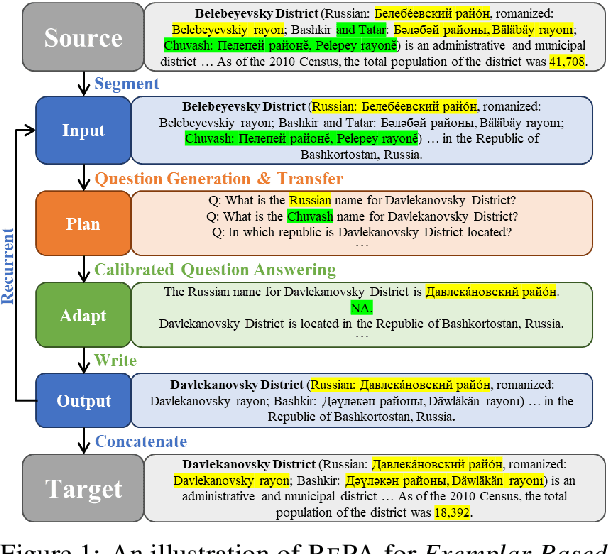
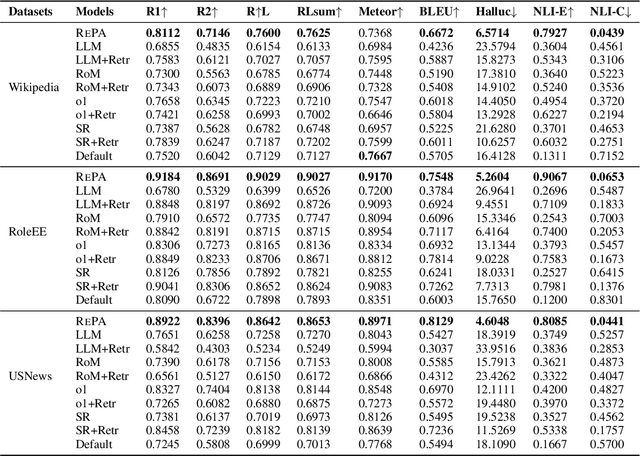
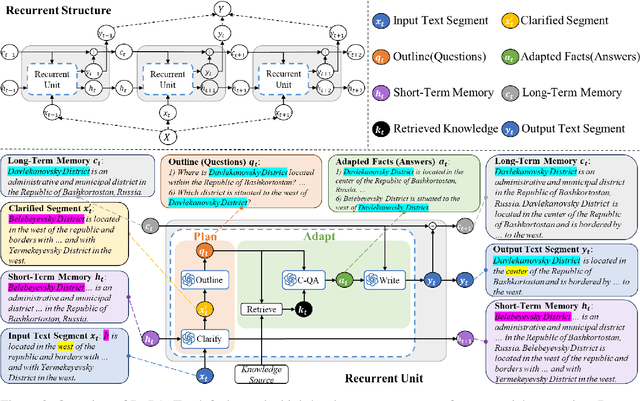
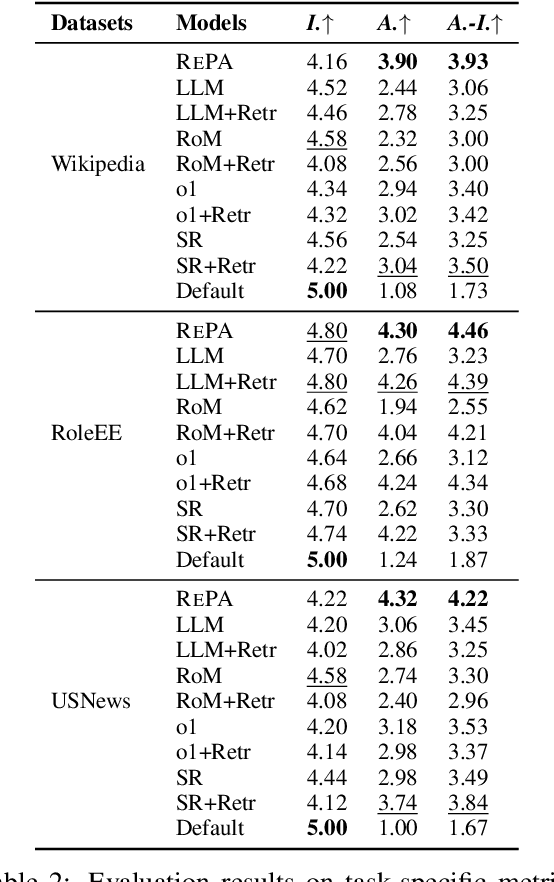
Abstract:We introduce the Exemplar-Based Expository Text Generation task, aiming to generate an expository text on a new topic using an exemplar on a similar topic. Current methods fall short due to their reliance on extensive exemplar data, difficulty in adapting topic-specific content, and issues with long-text coherence. To address these challenges, we propose the concept of Adaptive Imitation and present a novel Recurrent Plan-then-Adapt (RePA) framework. RePA leverages large language models (LLMs) for effective adaptive imitation through a fine-grained plan-then-adapt process. RePA also enables recurrent segment-by-segment imitation, supported by two memory structures that enhance input clarity and output coherence. We also develop task-specific evaluation metrics--imitativeness, adaptiveness, and adaptive-imitativeness--using LLMs as evaluators. Experimental results across our collected three diverse datasets demonstrate that RePA surpasses existing baselines in producing factual, consistent, and relevant texts for this task.
NTR-Gaussian: Nighttime Dynamic Thermal Reconstruction with 4D Gaussian Splatting Based on Thermodynamics
Mar 05, 2025Abstract:Thermal infrared imaging offers the advantage of all-weather capability, enabling non-intrusive measurement of an object's surface temperature. Consequently, thermal infrared images are employed to reconstruct 3D models that accurately reflect the temperature distribution of a scene, aiding in applications such as building monitoring and energy management. However, existing approaches predominantly focus on static 3D reconstruction for a single time period, overlooking the impact of environmental factors on thermal radiation and failing to predict or analyze temperature variations over time. To address these challenges, we propose the NTR-Gaussian method, which treats temperature as a form of thermal radiation, incorporating elements like convective heat transfer and radiative heat dissipation. Our approach utilizes neural networks to predict thermodynamic parameters such as emissivity, convective heat transfer coefficient, and heat capacity. By integrating these predictions, we can accurately forecast thermal temperatures at various times throughout a nighttime scene. Furthermore, we introduce a dynamic dataset specifically for nighttime thermal imagery. Extensive experiments and evaluations demonstrate that NTR-Gaussian significantly outperforms comparison methods in thermal reconstruction, achieving a predicted temperature error within 1 degree Celsius.
Molecular Odor Prediction with Harmonic Modulated Feature Mapping and Chemically-Informed Loss
Feb 03, 2025



Abstract:Molecular odor prediction has great potential across diverse fields such as chemistry, pharmaceuticals, and environmental science, enabling the rapid design of new materials and enhancing environmental monitoring. However, current methods face two main challenges: First, existing models struggle with non-smooth objective functions and the complexity of mixed feature dimensions; Second, datasets suffer from severe label imbalance, which hampers model training, particularly in learning minority class labels. To address these issues, we introduce a novel feature mapping method and a molecular ensemble optimization loss function. By incorporating feature importance learning and frequency modulation, our model adaptively adjusts the contribution of each feature, efficiently capturing the intricate relationship between molecular structures and odor descriptors. Our feature mapping preserves feature independence while enhancing the model's efficiency in utilizing molecular features through frequency modulation. Furthermore, the proposed loss function dynamically adjusts label weights, improves structural consistency, and strengthens label correlations, effectively addressing data imbalance and label co-occurrence challenges. Experimental results show that our method significantly can improves the accuracy of molecular odor prediction across various deep learning models, demonstrating its promising potential in molecular structure representation and chemoinformatics.
The Fusion of Deep Reinforcement Learning and Edge Computing for Real-time Monitoring and Control Optimization in IoT Environments
Feb 28, 2024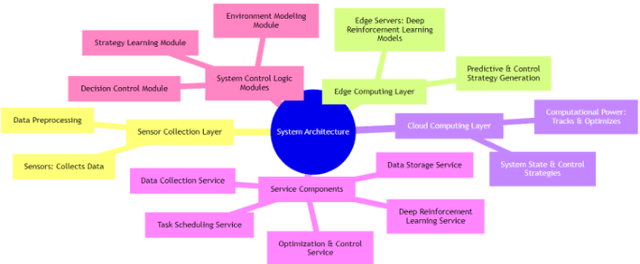
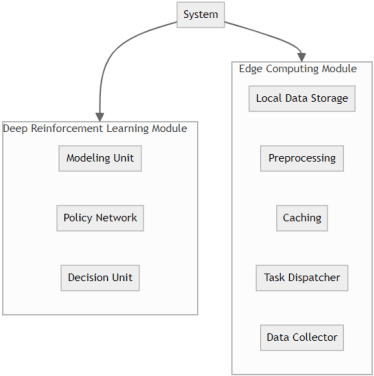
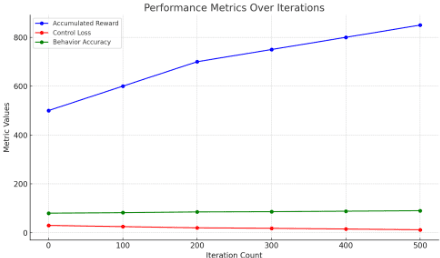

Abstract:In response to the demand for real-time performance and control quality in industrial Internet of Things (IoT) environments, this paper proposes an optimization control system based on deep reinforcement learning and edge computing. The system leverages cloud-edge collaboration, deploys lightweight policy networks at the edge, predicts system states, and outputs controls at a high frequency, enabling monitoring and optimization of industrial objectives. Additionally, a dynamic resource allocation mechanism is designed to ensure rational scheduling of edge computing resources, achieving global optimization. Results demonstrate that this approach reduces cloud-edge communication latency, accelerates response to abnormal situations, reduces system failure rates, extends average equipment operating time, and saves costs for manual maintenance and replacement. This ensures real-time and stable control.
Ask To The Point: Open-Domain Entity-Centric Question Generation
Oct 21, 2023Abstract:We introduce a new task called *entity-centric question generation* (ECQG), motivated by real-world applications such as topic-specific learning, assisted reading, and fact-checking. The task aims to generate questions from an entity perspective. To solve ECQG, we propose a coherent PLM-based framework GenCONE with two novel modules: content focusing and question verification. The content focusing module first identifies a focus as "what to ask" to form draft questions, and the question verification module refines the questions afterwards by verifying the answerability. We also construct a large-scale open-domain dataset from SQuAD to support this task. Our extensive experiments demonstrate that GenCONE significantly and consistently outperforms various baselines, and two modules are effective and complementary in generating high-quality questions.
Render-and-Compare: Cross-View 6 DoF Localization from Noisy Prior
Feb 13, 2023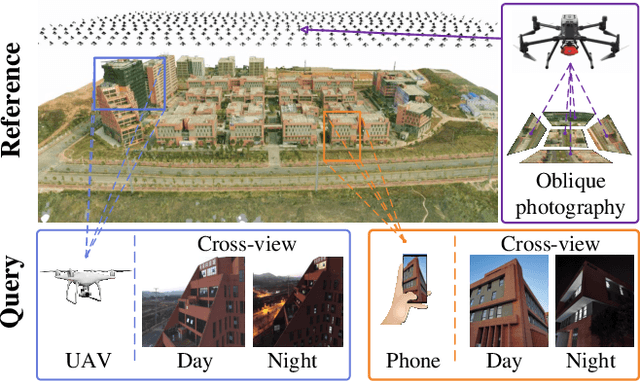



Abstract:Despite the significant progress in 6-DoF visual localization, researchers are mostly driven by ground-level benchmarks. Compared with aerial oblique photography, ground-level map collection lacks scalability and complete coverage. In this work, we propose to go beyond the traditional ground-level setting and exploit the cross-view localization from aerial to ground. We solve this problem by formulating camera pose estimation as an iterative render-and-compare pipeline and enhancing the robustness through augmenting seeds from noisy initial priors. As no public dataset exists for the studied problem, we collect a new dataset that provides a variety of cross-view images from smartphones and drones and develop a semi-automatic system to acquire ground-truth poses for query images. We benchmark our method as well as several state-of-the-art baselines and demonstrate that our method outperforms other approaches by a large margin.
Learning the Relation between Similarity Loss and Clustering Loss in Self-Supervised Learning
Jan 08, 2023



Abstract:Self-supervised learning enables networks to learn discriminative features from massive data itself. Most state-of-the-art methods maximize the similarity between two augmentations of one image based on contrastive learning. By utilizing the consistency of two augmentations, the burden of manual annotations can be freed. Contrastive learning exploits instance-level information to learn robust features. However, the learned information is probably confined to different views of the same instance. In this paper, we attempt to leverage the similarity between two distinct images to boost representation in self-supervised learning. In contrast to instance-level information, the similarity between two distinct images may provide more useful information. Besides, we analyze the relation between similarity loss and feature-level cross-entropy loss. These two losses are essential for most deep learning methods. However, the relation between these two losses is not clear. Similarity loss helps obtain instance-level representation, while feature-level cross-entropy loss helps mine the similarity between two distinct images. We provide theoretical analyses and experiments to show that a suitable combination of these two losses can get state-of-the-art results.
Sensitivity analysis of biological washout and depth selection for a machine learning based dose verification framework in proton therapy
Dec 21, 2022



Abstract:Dose verification based on proton-induced positron emitters is a promising quality assurance tool and may leverage the strength of artificial intelligence. To move a step closer towards practical application, the sensitivity analysis of two factors needs to be performed: biological washout and depth selection. selection. A bi-directional recurrent neural network (RNN) model was developed. The training dataset was generated based upon a CT image-based phantom (abdomen region) and multiple beam energies/pathways, using Monte-Carlo simulation (1 mm spatial resolution, no biological washout). For the modeling of biological washout, a simplified analytical model was applied to change raw activity profiles over a period of 5 minutes, incorporating both physical decay and biological washout. For the study of depth selection (a challenge linked to multi field/angle irradiation), truncations were applied at different window lengths (100, 125, 150 mm) to raw activity profiles. Finally, the performance of a worst-case scenario was examined by combining both factors (depth selection: 125 mm, biological washout: 5 mins). The accuracy was quantitatively evaluated in terms of range uncertainty, mean absolute error (MAE) and mean relative errors (MRE). Our proposed AI framework shows good immunity to the perturbation associated with two factors. The detection of proton-induced positron emitters, combined with machine learning, has great potential to implement online patient-specific verification in proton therapy.
Light in the Larynx: a Miniaturized Robotic Optical Fiber for In-office Laser Surgery of the Vocal Folds
Apr 27, 2022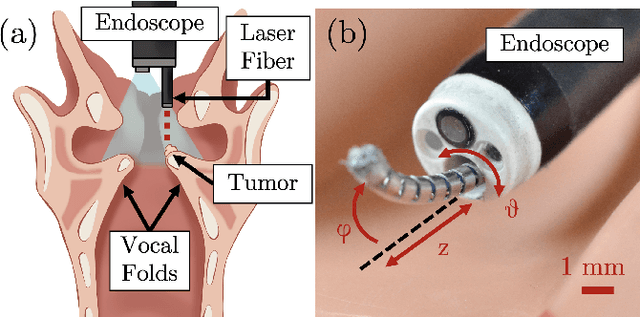
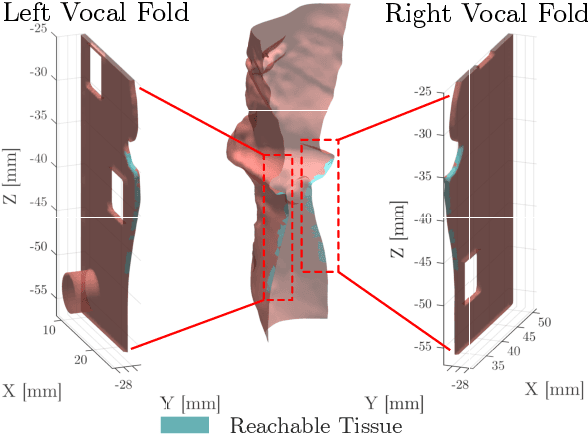
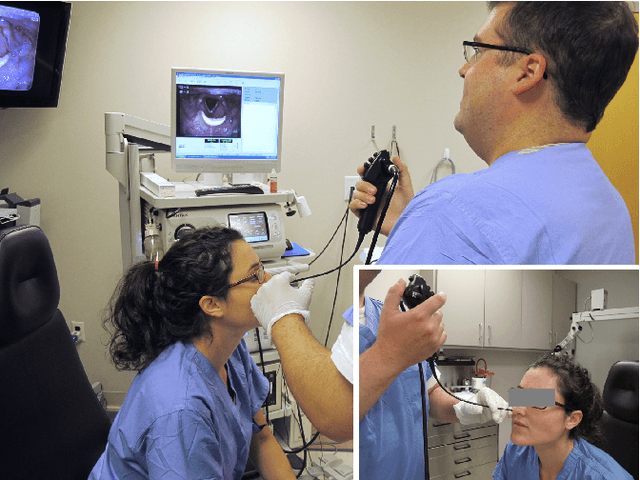

Abstract:This letter reports the design, construction, and experimental validation of a novel hand-held robot for in-office laser surgery of the vocal folds. In-office endoscopic laser surgery is an emerging trend in Laryngology: It promises to deliver the same patient outcomes of traditional surgical treatment (i.e., in the operating room), at a fraction of the cost. Unfortunately, office procedures can be challenging to perform; the optical fibers used for laser delivery can only emit light forward in a line-of-sight fashion, which severely limits anatomical access. The robot we present in this letter aims to overcome these challenges. The end effector of the robot is a steerable laser fiber, created through the combination of a thin optical fiber (0.225 mm) with a tendon-actuated Nickel-Titanium notched sheath that provides bending. This device can be seamlessly used with most commercially available endoscopes, as it is sufficiently small (1.1 mm) to pass through a working channel. To control the fiber, we propose a compact actuation unit that can be mounted on top of the endoscope handle, so that, during a procedure, the operating physician can operate both the endoscope and the steerable fiber with a single hand. We report simulation and phantom experiments demonstrating that the proposed device substantially enhances surgical access compared to current clinical fibers.
Delving into Variance Transmission and Normalization: Shift of Average Gradient Makes the Network Collapse
Mar 22, 2021
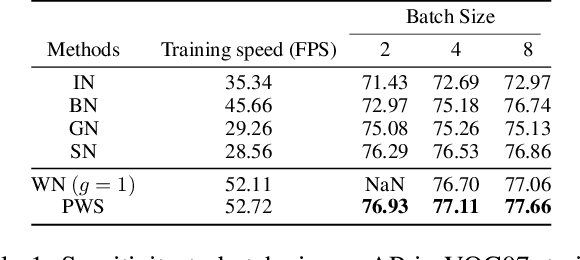
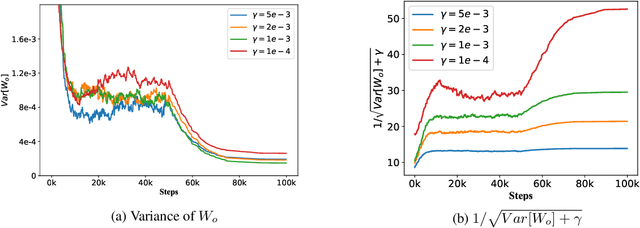
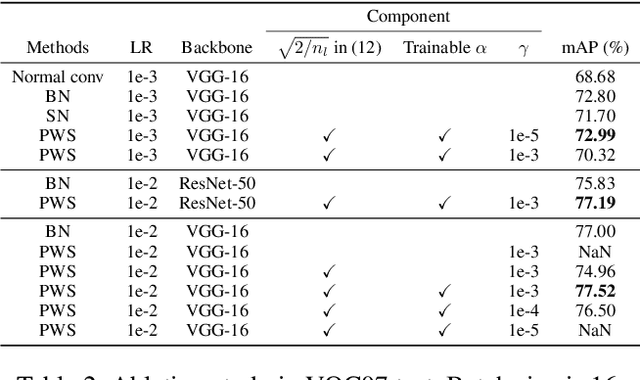
Abstract:Normalization operations are essential for state-of-the-art neural networks and enable us to train a network from scratch with a large learning rate (LR). We attempt to explain the real effect of Batch Normalization (BN) from the perspective of variance transmission by investigating the relationship between BN and Weights Normalization (WN). In this work, we demonstrate that the problem of the shift of the average gradient will amplify the variance of every convolutional (conv) layer. We propose Parametric Weights Standardization (PWS), a fast and robust to mini-batch size module used for conv filters, to solve the shift of the average gradient. PWS can provide the speed-up of BN. Besides, it has less computation and does not change the output of a conv layer. PWS enables the network to converge fast without normalizing the outputs. This result enhances the persuasiveness of the shift of the average gradient and explains why BN works from the perspective of variance transmission. The code and appendix will be made available on https://github.com/lyxzzz/PWSConv.
 Add to Chrome
Add to Chrome Add to Firefox
Add to Firefox Add to Edge
Add to Edge